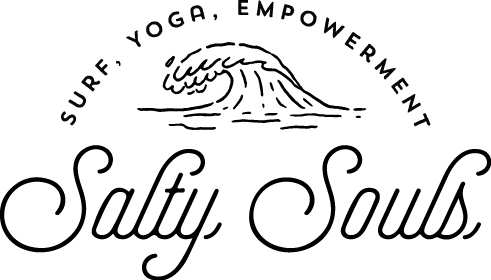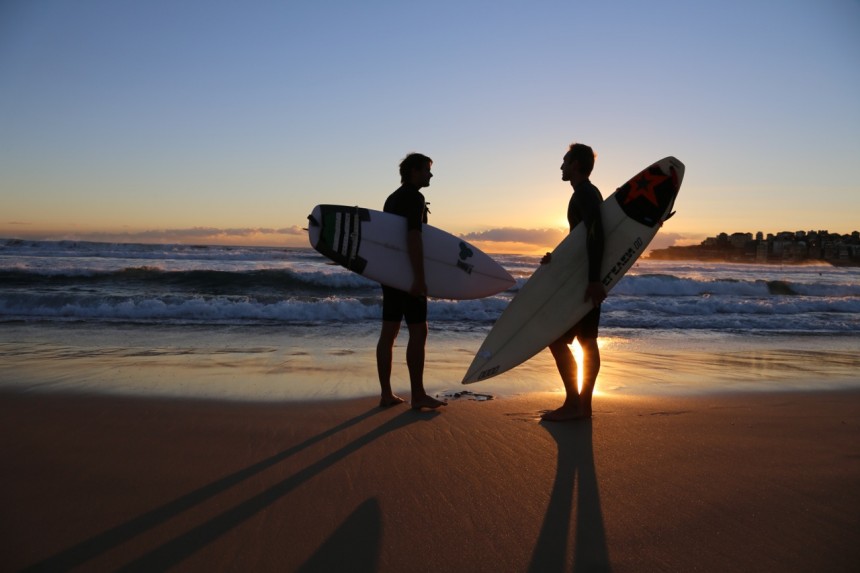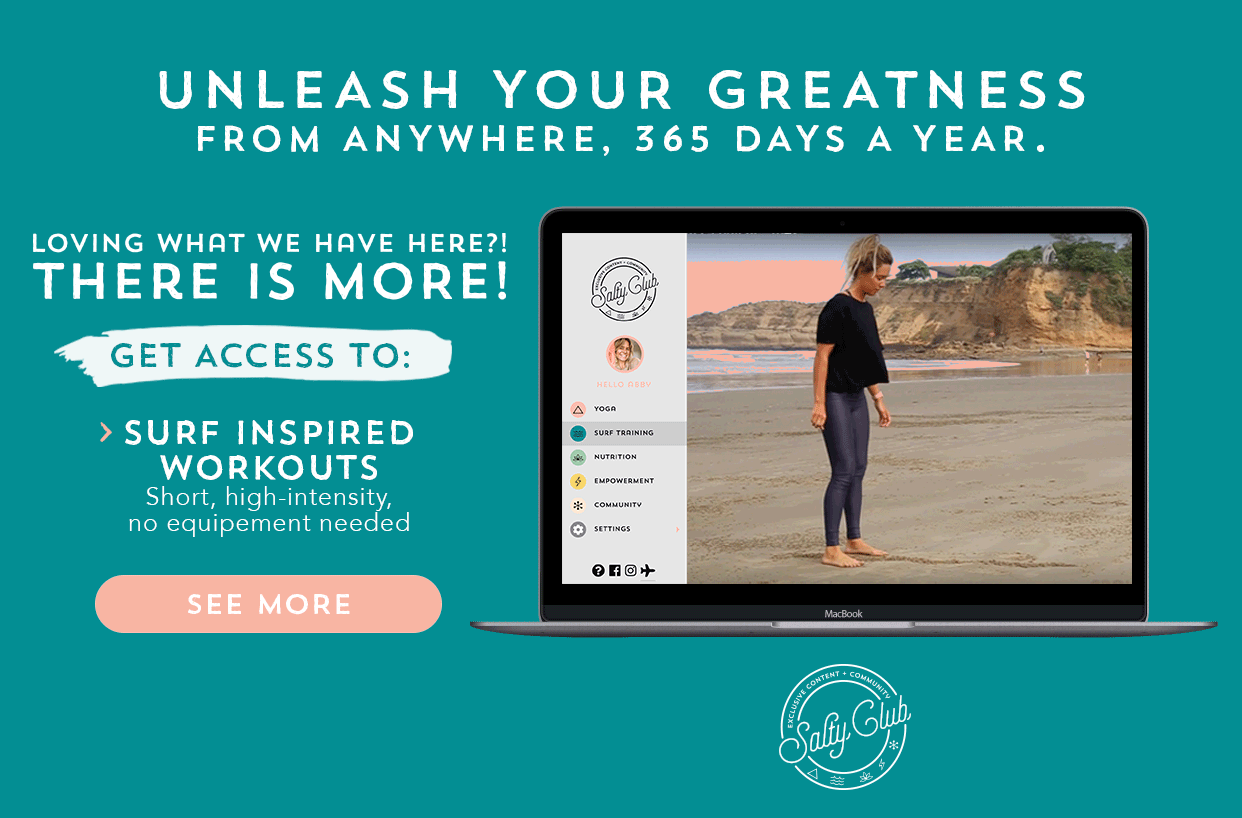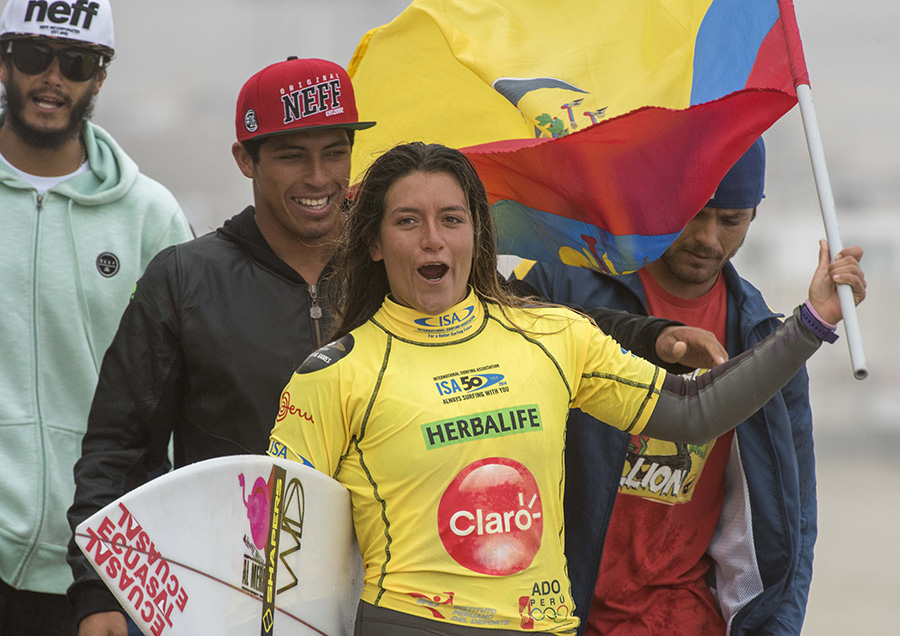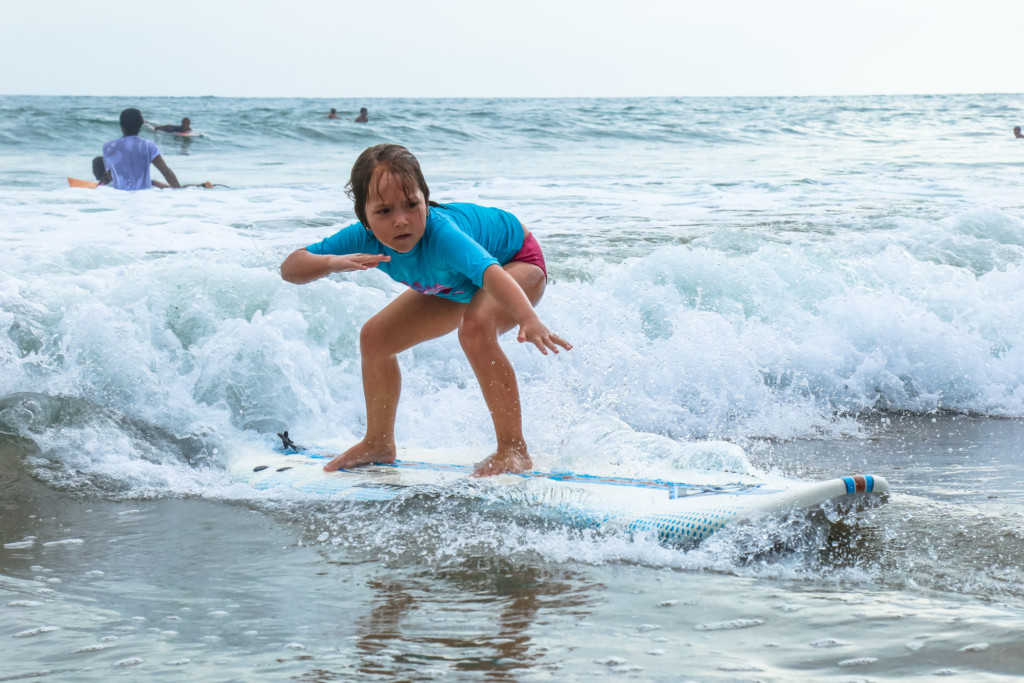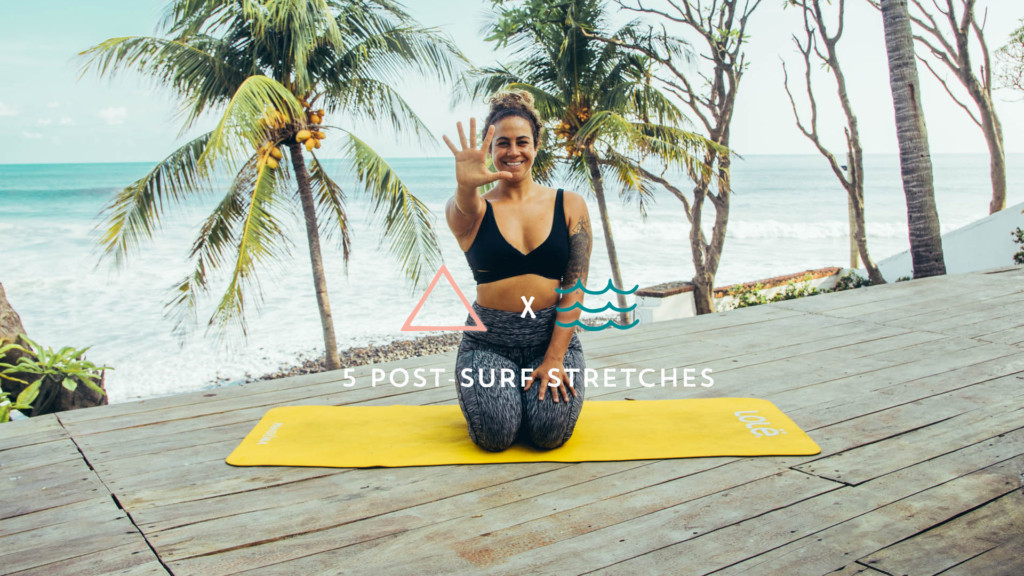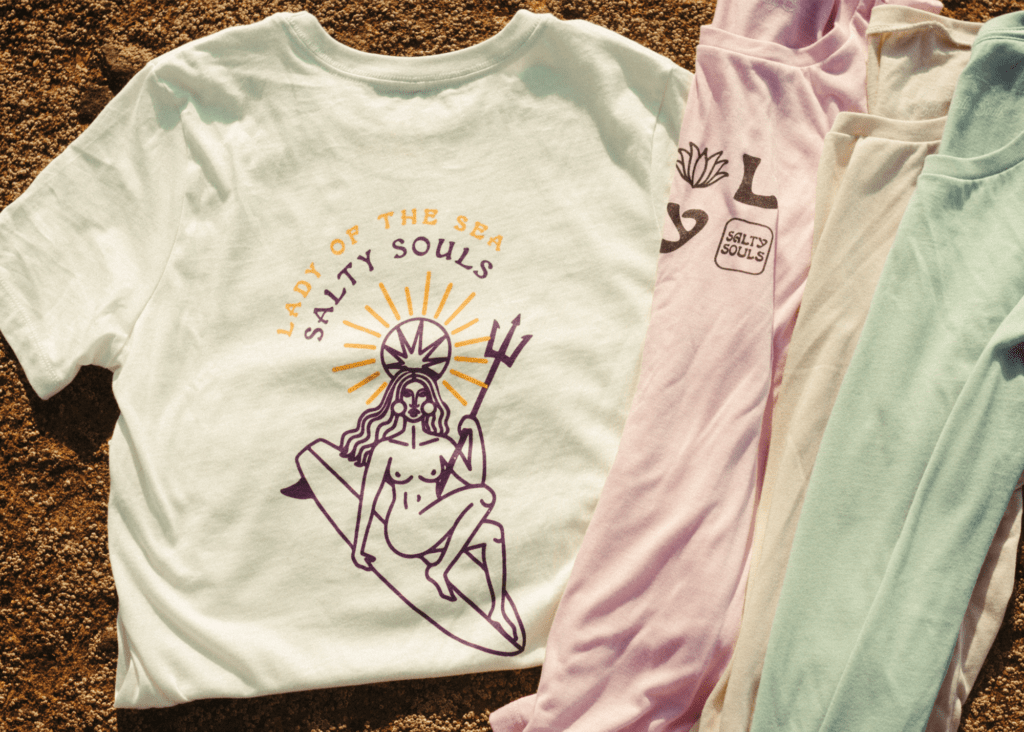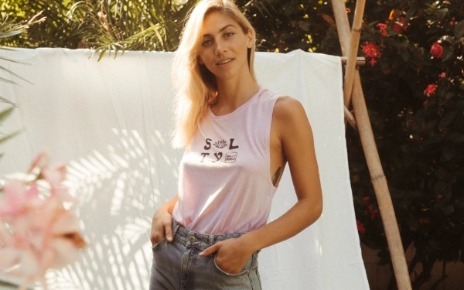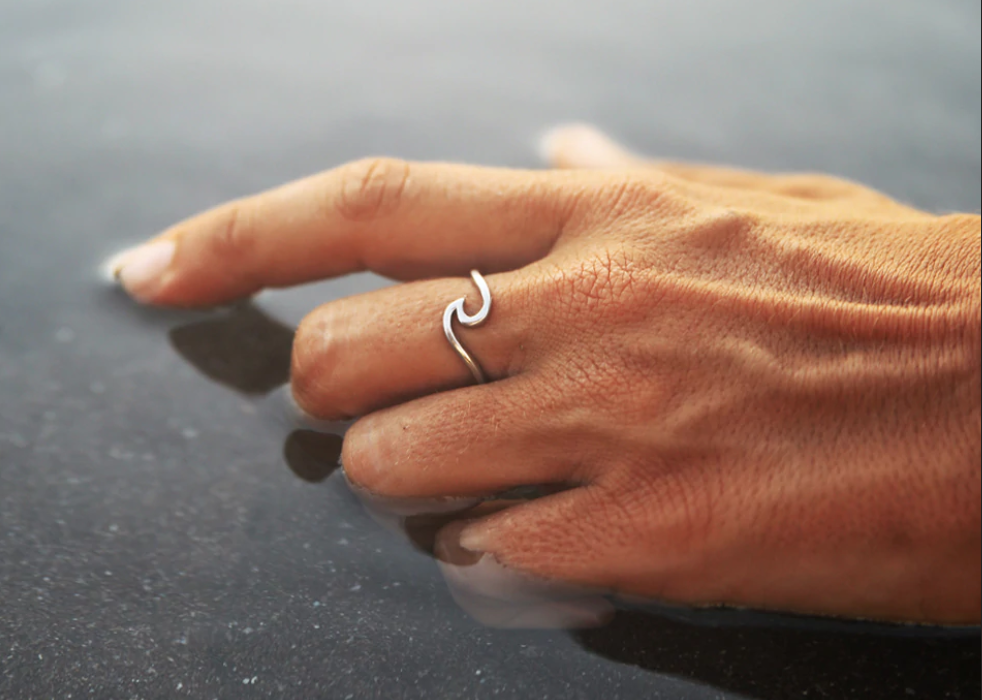Surfing: the sport of freedom?
Surfing. It’s the sport of freedom, they’ll say. I’ve said it myself a million times. In the sea, sitting astride my surfboard I am free, unburdened, open, raw.
“How strange it was to see men do something beautiful,” Tim Winton wrote in his book Breath. “Something pointless and elegant, as though nobody saw or cared.”
And it’s true, in surfing, no one cares. Men are allowed to be elegant and graceful. They’re allowed to be moved to tears when talking about the perfect wave they caught that day, they’re allowed to be passionate and sentimental.
As long as they’re not gay.
“At the moment, it’s just expected everyone is straight, and when you’re out in the water and someone comes up to you and asks you a question, there’s always an understanding that you’re straight.” says Thomas Castets, founder of Gaysurfers.net
As the blog editor of a company that teaches women how to surf, I spend a lot of time neck deep in online surf content. Articles, videos, movies, interviews, advertising, social media. Across all those platforms, I see no representation of gay surfers. All I see is the implication that if you surf, you must be straight. And this is costing many surfers sponsorships, belonging, and sometimes can even result in suicide.
It’s time for change.
I sat down with Thomas Castets, the founder of Gaysurfers.net and producer of award winning documentary OUT in the line up.
Implied heterosexuality (where you automatically assume someone is straight) is a recurring thing he continuously has to face, he says.
“On a recent surf trip, it took me three days to convince the other guys on the surf trip that I was gay. They did not believe me, they thought I was joking!”
This is where I hear time and time again a resounding: ‘I’m not against gays, just don’t rub it in my face!’ or ‘you can be gay, just don’t tell anyone about it.’
But as Dr Clifton Evers states in the documentary OUT in the lineup, mere tolerance is not the same thing as appreciation. And being just being ‘tolerant’ is nowhere, nowhere near enough to make someone feel as though they belong in their community.
“To live your dreams, you cannot hide your true self.” He says.
“‘Tolerance says that you’ve got this dominant group and they’re going to ‘put up’ with this marginal group. I think that there should be an appreciation and effort to understand where other people are coming from. Tolerance doesn’t suggest dialogue whatsoever. It keeps a classic hierarchy in place and you want to ditch the hierarchy.”
In other words, ‘tolerance’ upholds this idea of heterosexuality as the norm, meaning anything outside that is merely ‘put up with.’ Being ‘put up with’ is not ‘belonging,’ and to feel like you don’t belong to a community of people who share the same life-consuming passion as you – surfing- is heartbreaking.
“why should sexuality even an issue that comes up in the line-up? We’re here to surf.’ ”
Wrong. Think about conversations in the line up, during a lull between waves when you’re just killing time and chatting with those around you. You might casually mention that recent surf trip you took with your partner to Indo last year. You might tell a funny story that happened last night at the bar with a person you were interested in.
When you’re straight, you do it without thinking: “my boyfriend and I are planning a trip in October.” “My girlfriend thinks that…” like smooth flowing water you can mention this without a hitch. But what if you’re gay? When each time you mention your same sex partner to a new friend or acquaintance it’s met with a hesitation, a stopped breath, a ‘oh… you mean you’re…?” Which puts you in this position of being ‘other’, different, an outsider.
It is unbelievable to think this still happens in a community that is meant to be one of the most progressive sports in the world.
What we need is to create equality, promote dialogue and understanding and create a landscape where everyone feels welcome and included.
The struggle goes further for women, as Castets points out. “I originally thought the struggles of gay men and women were the same. But the more I spoke to gay women, the more I realized their struggles go further in terms of sexism and traditional ideals of femininity.”
Traditional ideals of femininity = traditionally feminine, thin, athletic build, white and of course… straight. Don’t believe me? Go on the instagram of your favorite big surf brand. Look at the women in the pictures. What do a sweeping majority of them look like? Exactly.
Pro surfer Keala Kennelly happens to be gay, and is is outspoken about the unfair treatment around gay female surfers in the surfing world. In an excellent article for The Guardian she said: “I have seen so many talented female surfers come and go because they didn’t have the support from the surfing industry due to the fact that they were either gay, suspected of being gay, not feminine enough or they simply did not fit the image that brands believe sells product,”
Furthering that idea, Inertia writer Clair Sullivan goes as far as suggesting the surfing industry is stuck in a women’s and queer rights “time warp”, according to writer Claire Sullivan.
“While society is slowly moving forward in regards to women’s and queer rights, the surfing industry is stuck in a time warp, somewhere between Puberty Blues and the Bra Boys. Reliant upon and driven by its sponsors, professional surfing has become entwined with the marketability of surf culture, and the results are disastrous, particularly for women. To the detriment of some of the world’s most talented athletes, femininity and heterosexuality remain pre-determinants of sponsorship and media attention, and often, one’s ability to succeed in the sport.” she said.
I personally know one professional surfer who has to keep her same-sex relationships on the low down for fear of losing sponsorship or support. Often when she travels with her partner, reporters refer to her partner as her ‘friend.’
Not only does homophobia in surfing affect potential sponshorships and subsequently potentially the entire trajectory of someones like, discrimination and exclusion are the key casual factors of LGBTI mental ill-health and suicidality, according to a 2013 study by the National LGBTI alliance.
We need to feel seen. We need to feel accepted. We need to feel like we belong. This is as vital as food or water.
In three years we have had 300+ girls at our Salty Souls Experience surf and yoga retreats in El Salvador and Ecuador. Our community now ranges in the ten thousands of women who want to push their boundaries, surf their guts out and do big things in the world. Now, with our global platform of women who surf in The Salty Club, we want to make sure every woman in our community feels like they can show up in this space as their authentic selves.
So how can we support our surfer friends who happen to be gay?
“I think the best way to support our surfer friends who happen to be gay, is to treat them like any other friend, regardless of their sexuality,” says Castets.
It’s so obvious, but needs to be said.
“Because they are possibly feeling a fear of being rejected, it is important to make them feel that their sexuality does not affect the way they are integrated in the surf community.”
I would add, educate yourself. Where do you automatically assume someone is straight when you meet them? Where do you practice heternormativity (a viewpoint that expresses heterosexuality as a given instead of being one of many possibilities?) Examples of that is asking a female automatically ‘do you have a boyfriend?’ or asking a male ‘does your girlfriend surf?’ The truth is, people wouldn’t have to ‘come out’ if you didn’t assume they were straight to begin with. So don’t.
If you’re a surfer who happens to be gay, it is often easier for a gay surfer to talk to another gay surfer for inspiration and support. With more than 7000 members in 51 geographical groups around the world, GaySurfers.net is a website where a gay surfer can meet other like minded people.
It’s time for change. Let’s do better.
Feature image and images throughout: provided

